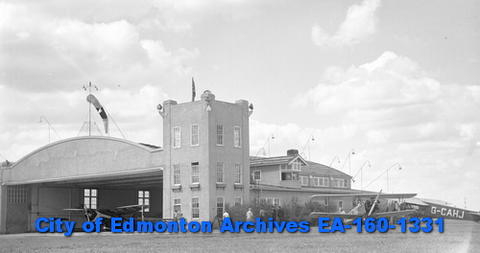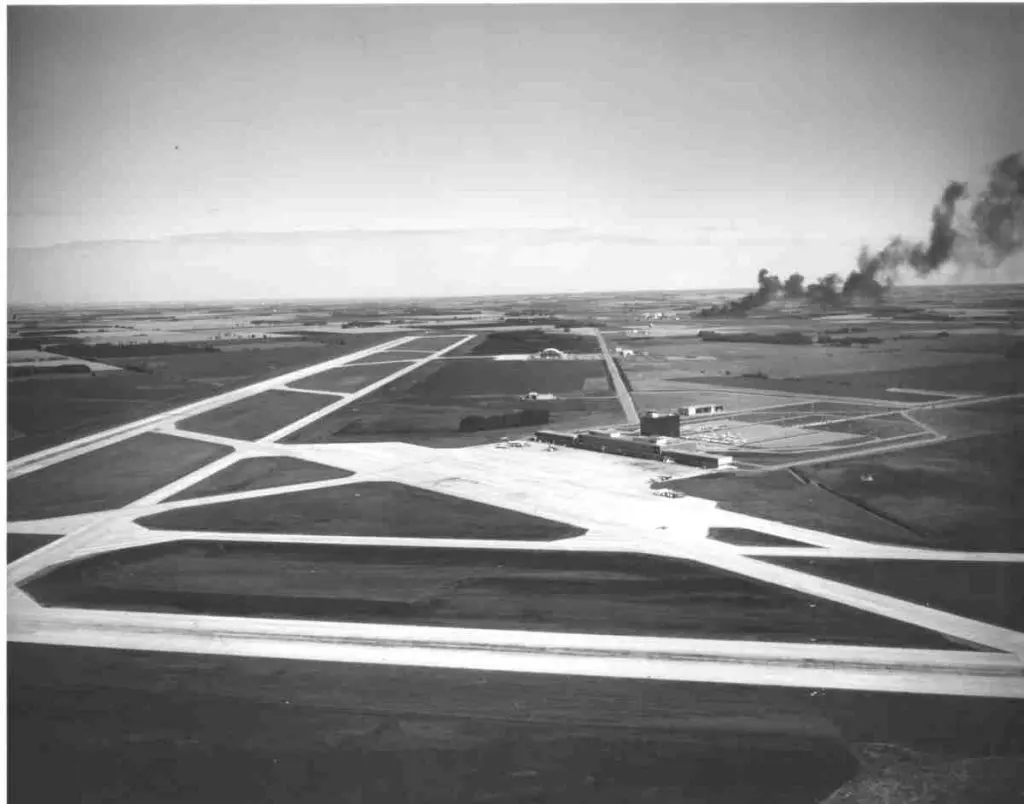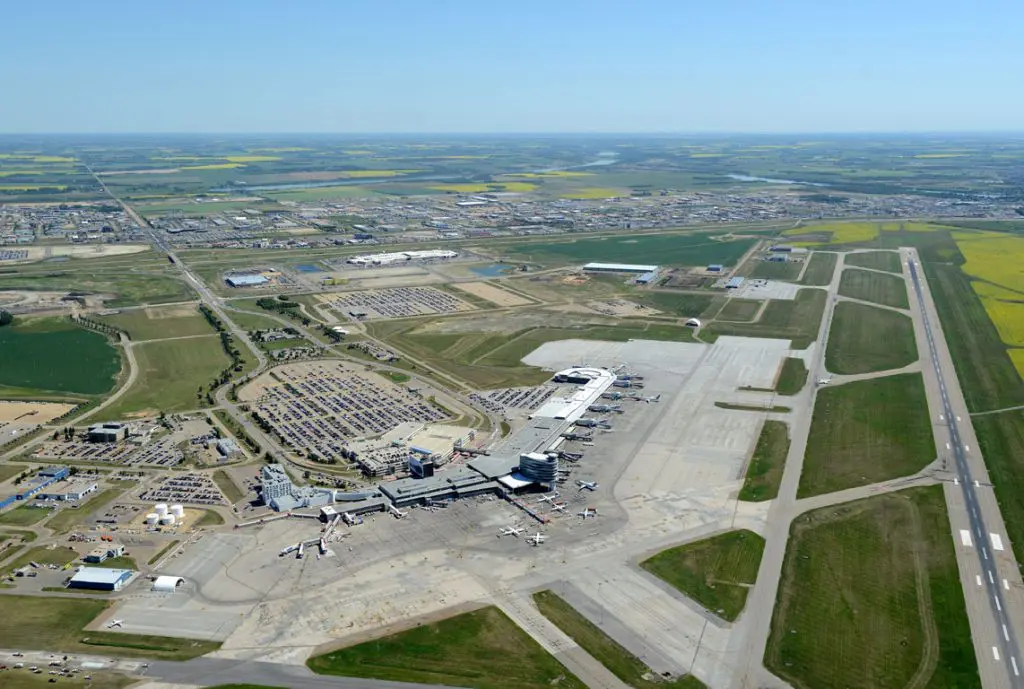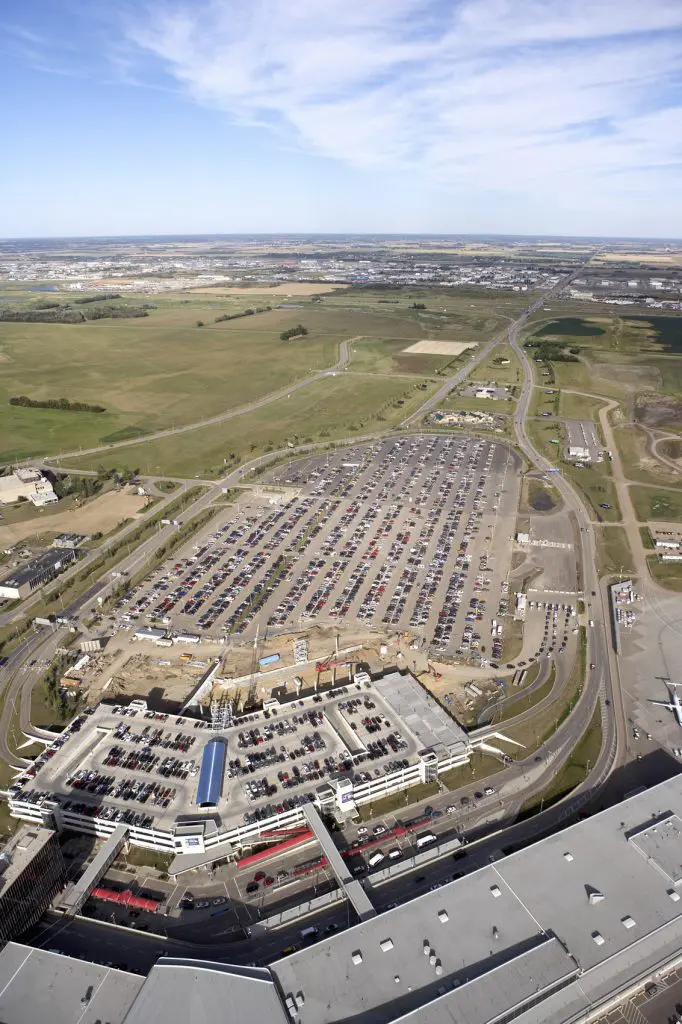History
The story of Edmonton International Airport
What began as farmland and beaver habitat is now the site of a major economic driver in the Edmonton Metro Region.
Today, YEG provides an economic output of over $5.3 billion and supports 23,500 jobs across the region. Read on to learn more about how Edmonton International Airport took flight.
Before YEG (1920s-1950s)
Long before YEG was founded in 1960, Edmonton was served by the Edmonton Municipal Airport, also called Blatchford Field.
Opened in 1927 just northwest of downtown to house a flying school, Blatchford Field became Canada’s first licensed airfield in 1929.
As the city’s primary scheduled airport it was an important military airfield during the Second World War.
It didn’t take long, though, for aviation and the City of Edmonton to outgrow the airport.
With a city surrounding the Edmonton Municipal Airport, there was no room to extend its runways to accommodate larger jet airliners and more passengers.

Edmonton Blatchford Field Airport (aka City Centre Airport) circa 1937. Source: https://cityarchives.edmonton.ca/main-hangar-blatchford-field

From farmland to flights (1955)
In 1955, land near Leduc was chosen as the future site of the Edmonton International Airport. Transport Canada purchased 7,600 acres of land for $1,469,657.
By an unwritten “gentleman’s agreement,” the original landowners were allowed to lease back and continue to farm until the land was needed for the airport.
Turning farmland into runways was not easy:
- Weeds overtook the construction area and polluted the surrounding farmland
- A colony of beavers outwitted many human attempts to prevent them from flooding the site
- Airport security in those days meant keeping livestock off the runways
The first flight (1960)
On November 15, 1960, Edmonton International Airport opened for passenger service using the L-3 Communications Spar Aviation hangar as a temporary terminal.
In 1963, our 370,000 square foot steel and glass terminal that is now YEG’s north terminal opened. It cost $10 million and was ready a year ahead of schedule.
The airport served growing numbers of passengers over the next 20 years:
- 1962: 394,000 passengers
- 1974: 1.1 million passengers
- 1980: 2 million passengers

Growing pains (1970s-1990s)
During the 1970s and 1980s, YEG handled wide-body jets that carried up to 400 passengers non-stop to Europe. The Edmonton Municipal Airport became a hub for short-haul flights, a convenience for business travellers.
The two-airport system had challenges:
- Connecting passengers had to travel between two airports
- Passenger volumes at YEG declined between 1983 and 1995
- There were fewer non-stop flights from YEG, requiring passengers to connect through Calgary or Vancouver
- Passenger growth at the Municipal Airport created more aircraft noise for city residents
In October 1995, 77 percent of Edmontonians voted to consolidate commercial flights at the International Airport. The Municipal Airport would continue to serve private and general aviation as the Edmonton City Centre Airport.
Consolidation put new pressures on YEG. The main terminal was designed to accommodate 2.5 million passengers per year, but by 1999, 3.8 million passengers were using YEG annually.
YEG grows (2000s-2010s)…
In the late 1990s and early 2000s, YEG underwent a major construction program that cost $450 million.
A new south terminal was built to house Air Canada and international carriers. WestJet became the principal tenant of the north terminal.
Central Hall was built to accommodate security screening and retail services. A new cargo apron was built to handle growing volumes of shipments by air.
By 2007, YEG was handling over 6 million passengers per year, flying to 53 non-stop destinations in Canada, the United States, Mexico, the Caribbean and Europe.
In 2012, another $700 million was invested on additional gates, a new passenger concourse and expanded parking.

…and grows (2015-2020s)
YEG is one of the fastest growing airports in Canada. We continue to invest in technology and development to serve more passengers and businesses in more ways.
- Airport City – with a large variety of businesses and tenants onsite, Airport City is bringing renewed growth, tourism and economic development to the region
- Cargo Village – we are investing in our Cargo Village infrastructure and partnerships to meet the growing and changing demand for cargo services
In 2018, YEG served 8.2 million passengers annually.
We are Canada’s largest airport in area – with more than half of our available land still under cultivation in 2018.
What’s up next for YEG?
Read our YEG Master Plan to find out where we are heading.

